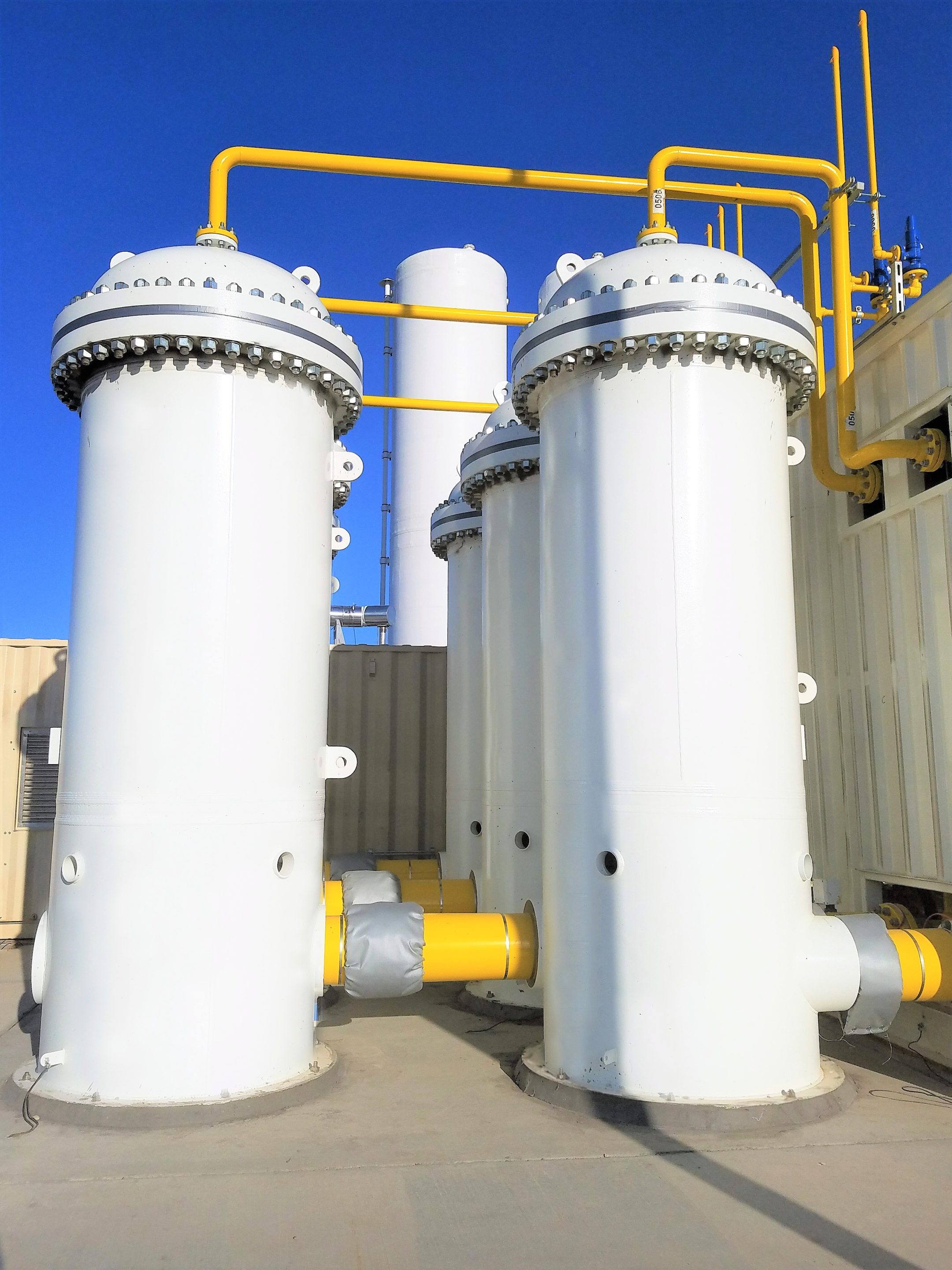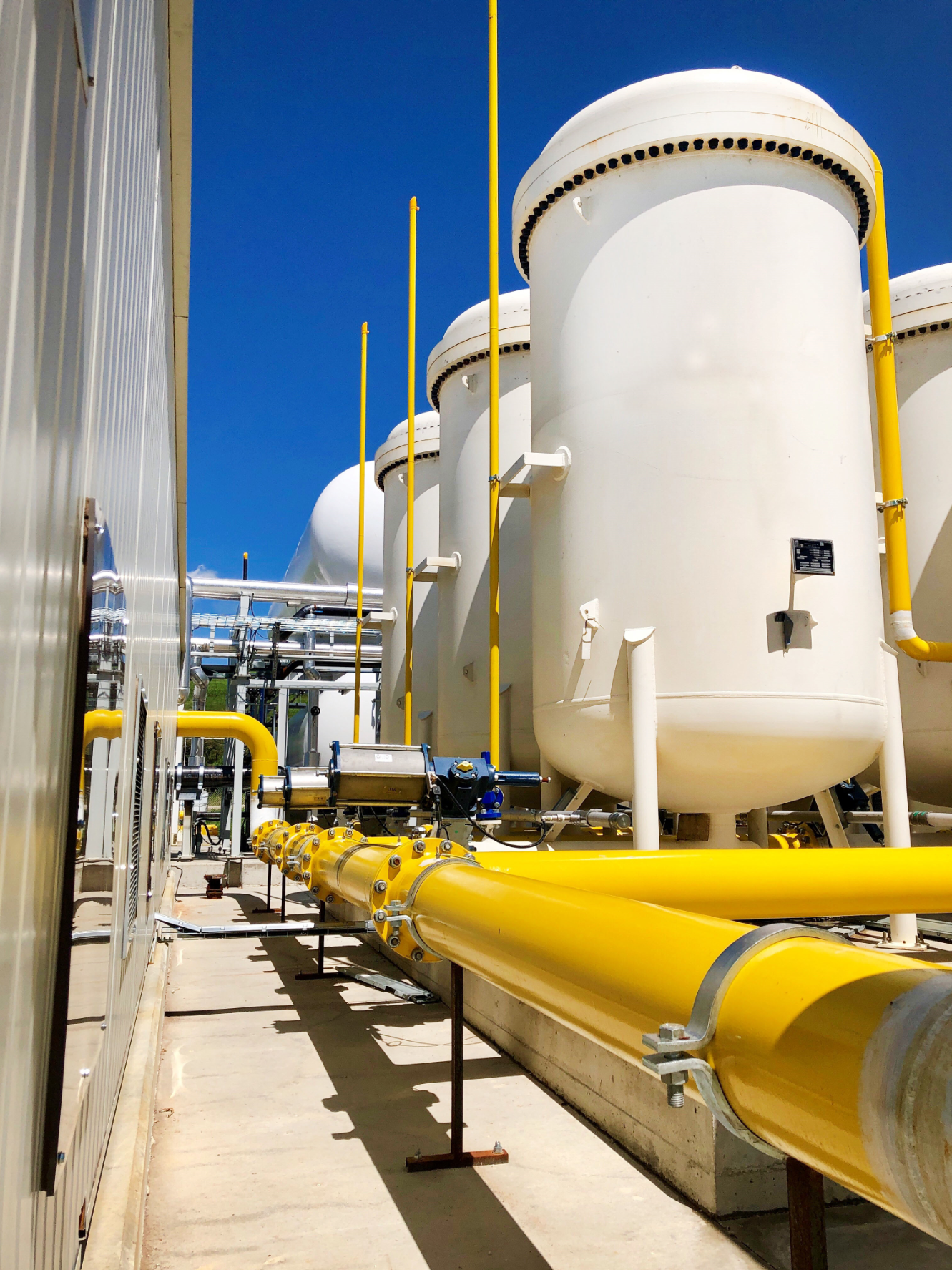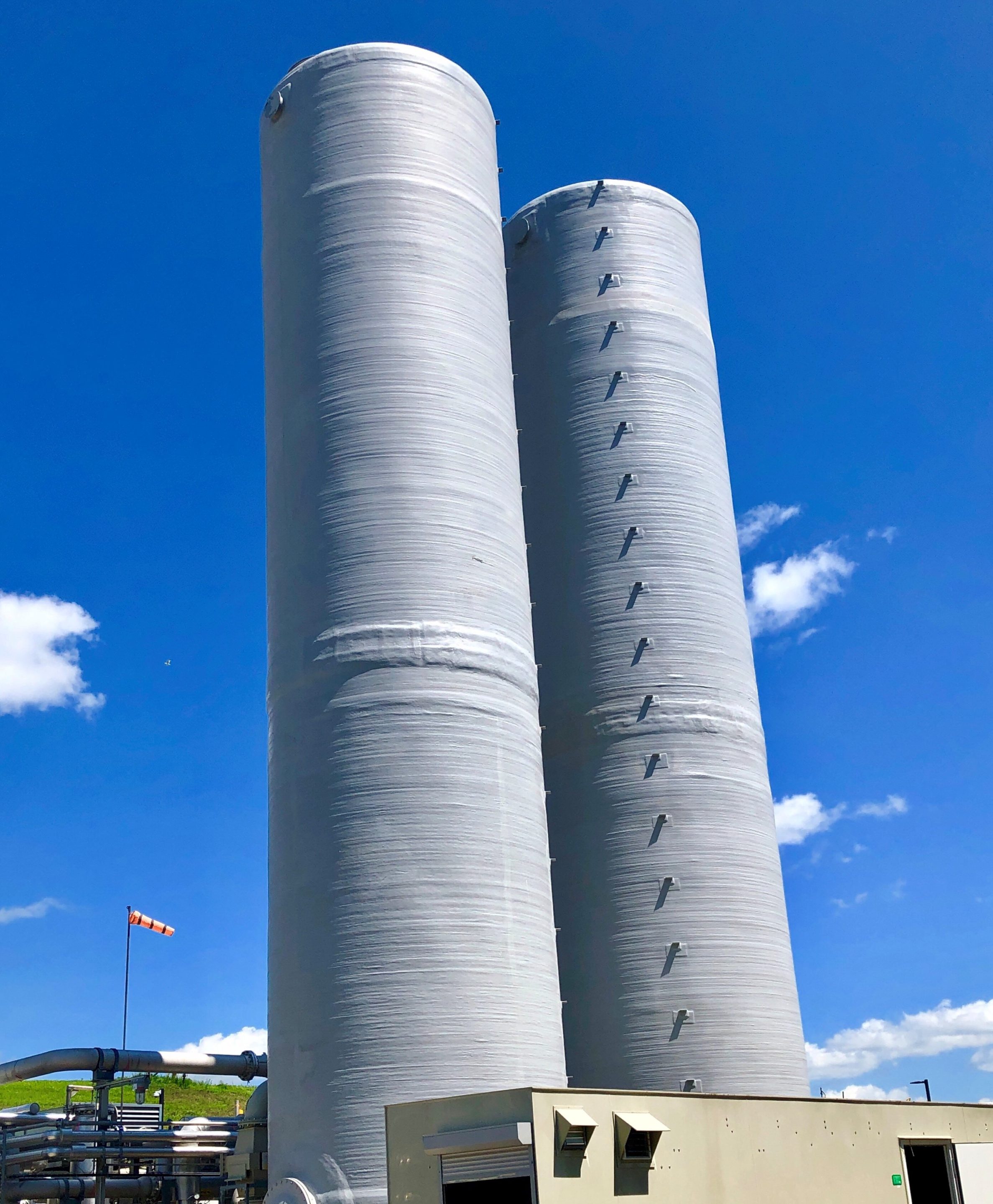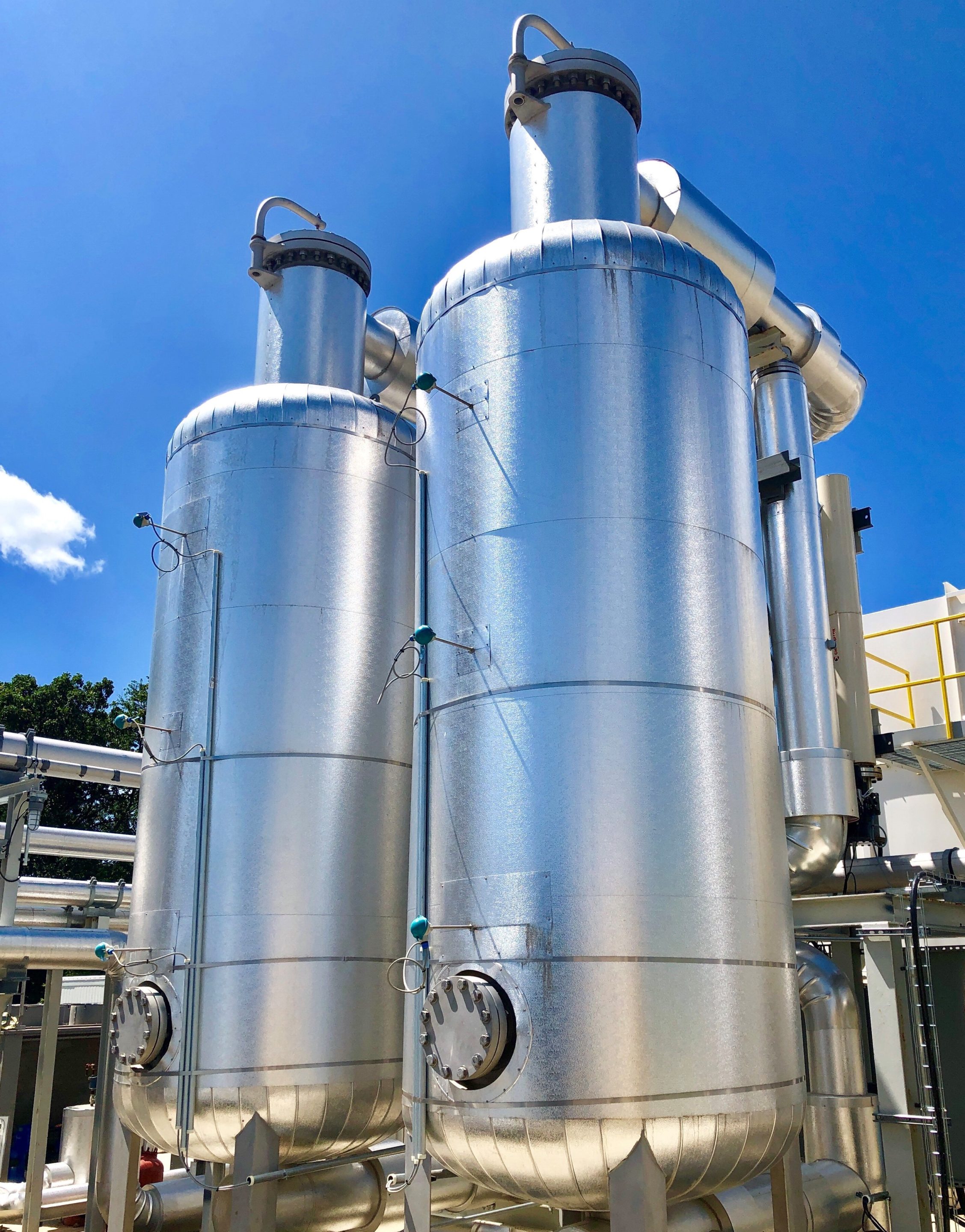Carbon Dioxide Removal
Pressure Swing Adsorption (PSA)
Our PSA carbon dioxide removal system is based on the preferred adsorption of carbon dioxide over methane on the internal surface of carbon molecular sieve (CMS) adsorbents. This separation effect is based on both the preferred physical adsorption of CO2 and the difference in size between these molecules.
Our PSA gas upgrading unit includes sets of 4-6 adsorber vessels filled with layers of different adsorbent materials, primarily consisting of a dedicated CMS. Each adsorber operates in an alternating cycle of adsorption, regeneration, and pressure build-up during normal operation. Because of the specialized media that we utilize, we can achieve methane recoveries of 99%+.
Membranes
Our membrane systems for CO2 removal are optimized for biogas from agricultural operations and wastewater treatment plants because they typically do not have significant levels of nitrogen. These units consist of hollow fiber membranes with high permeability for CO2, O2, H2O, and H2S allowing them to be easily removed from the methane.
Our membranes are simple to install and operate but are also capable of a very high methane recovery. Our standard 2-stage membrane systems reach over 98% recovery, and our 3-stage membrane system are guaranteed to reach over 99% recovery.
These units benefit from no moving parts, so there are minimal points of failure, and additional cartridges can be easily integrated into the system if needed. Compared to other membranes in the market, our membranes are very resistant to hydrogen sulfide which can be very corrosive in the presence of oxygen and water.
Nitrogen Removal
Pressure Swing Adsorption (PSA)
BIOFerm’s 1-Stage PSA system can typically remove 40-60% of oxygen and nitrogen when air concentrations are up to 4-5% by volume within the raw gas stream and produce biomethane with >960 BTU/scf.
However, in the case of higher air concentrations in the raw biogas stream, a second stage PSA unit is required. This allows raw gas containing air concentrations up to 14% by volume to be processed with a product gas having more than 960 BTU/scf.
Hydrogen Sulfide Removal
Activated Carbon Media
Biogas is heated to a temperature of approximately 100-150 degrees Fahrenheit and fed through a vessel filled with catalytic activated carbon to adsorb hydrogen sulfide and produce sulfur and water through a reaction with oxygen, as shown:
2 H2S + O2 → ¼ S8 + 2 H2O
While water evaporates, the sulfur remains irreversibly in the activated carbon. In cases where the H2S concentrations are high, a biological H2S removal system can be added.
Biological Desulfurization
Biogas is processed through a continuously operating bioscrubber with microorganisms that reduce H2S to sulfuric acid and elemental sulfur in the presence of oxygen, utilizing the following reactions:
2 H2S + O2 → ¼ S8 + 2 H2O
H2S + 2 O2 → H2SO4
These sulfur-metabolizing microorganisms grow on media inside a fiber-reinforced plastic column where the biogas flows upwards, and water flows downward.
These systems focus on bulk removal of H2S, with very low operating costs. Only a small amount of fresh water, fertilizer, and electricity is needed to maintain the bacteria.
Voc & Siloxane Removal
Activated Carbon Media
VOC & siloxane removal uses a BIOFerm temperature swing adsorption (TSA) system with two reactors filled with activated carbon. While one reactor is adsorping the VOCs and siloxanes, the second adsorbent bed is regenerated at elevated temperatures.
At higher temperatures most of the adsorbed components will desorb and diffuse into the gas phase again. The VOC-laden off-gas from the regeneration process will be destroyed in a thermal oxidizer.




